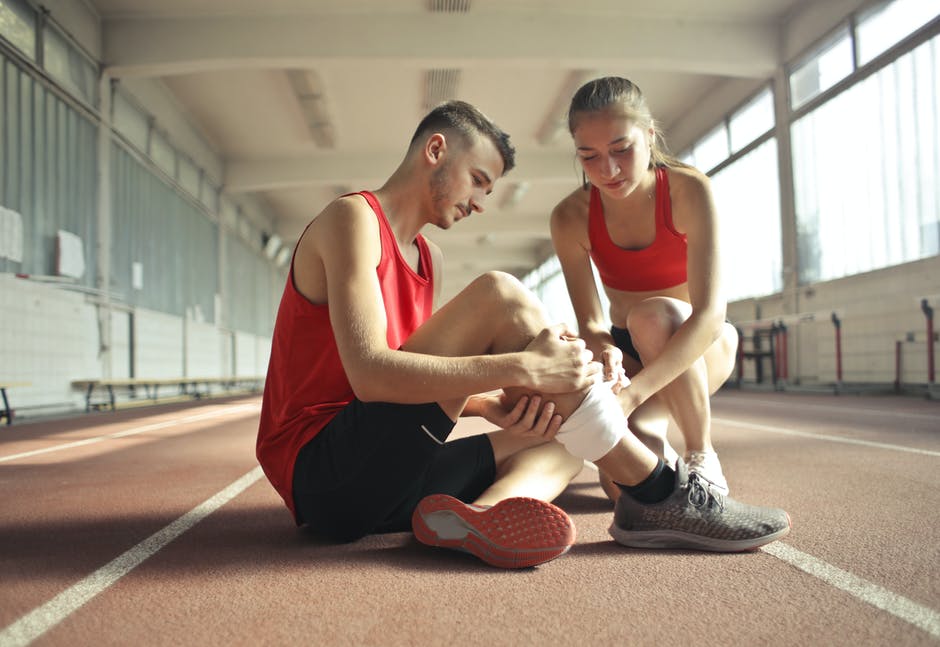
7 Simple Steps to Improve Your Recovery From a Sports Injury
Over 3.5 million injuries occur in the United States each year, resulting in some loss of participation time.
Exercise and sports-related injuries may happen, regardless of how hard you may try to avoid them. When you sustain such an injury, you will be eager to get back on your feet as soon as possible.
Any sports injury takes time to heal. However, by following some simple advice, you can heal faster and return to exercising or playing sooner.
Having a healing technique is still the right way to approach the healing process and avoid being injured again. Also, you can reduce your pain by knowing the diagnosis, participating in physical therapy, and adhering to your doctor’s treatment plan.
Keep reading to know the 7-simple steps to improve your sports injury recovery.
1. Understand Your Injury
When looking to recover from a sports injury, the first step is to understand your injury. An accurate diagnosis of the injury is key to making a fast recovery.
Knowing the injured area will tell you how long it may take to heal, the kind of exercise to do, and what to avoid. A qualified physiotherapist will help you with your sports injury rehabilitation.
But, knowing about your sports injury takes more than just having a thorough diagnosis. You have to know why it happened in the first place!
After a sports injury, you must view it as a learning experience. That way, you will train and play smatter hence avoiding injury in the future.
Also, it may be the key to an effective sports injury treatment. That’s so because some things you do daily might worsen the injury.
This step is an integral part of our consultation process. Our affiliate physicians will spend more time knowing what in your training, diet, regular life, etc., contributed to your injury.
Some sports injuries are out of your control. But we can truly say that after exhausting all possibilities.
2. Use the R.I.C.E Method
You can use the RICE method to treat the most common sports injuries. After an injury, your body will try to protect itself from more damage by displaying signs of redness, swelling, warmth, and pain.
As fluid is rushing to the affected area, your body will try hard to remove the damaged tissues. Ensure you apply the cold therapy at this stage for up to 72 hours to facilitate faster healing.
Here is how to do it right:
Rest
The core of the treatment for most common sports injuries is resting the affected area. That doesn’t mean being immobile completely; muscle atrophy may strike you instead.
Don’t put pressure on the hurt zone for at least two days. You can use a splint or brace if needed.
Also, you can perform moderate cardiovascular exercises.
Ice
Physicians recommend placing ice on the injured part every 10-15 minutes, every 2-3 hours, and up to two days after the injury.
Cold therapy reduces pain and swelling effectively. The process works by slowing the pain receptors, making you less sensitive to pain.
The low temperatures will act as vasoconstrictors. That minimizes blood vessels and instigates a more efficient lymphatic system.
Compression
When you mix cold therapy with proper pressure or compression, the procedure becomes more effective. When using an ice pack, use an elastic bandage to wrap it around the injured area.
Apply comfortable pressure to reduce swelling, but not too much since it may interrupt blood flow. If you notice skin discoloration or feel numb or tingly, loosen the bandage.
Also, ensure you remove the bandage every 15-minutes to prevent tissue damage or frostbite.
Elevation
Raising the part above your heart level reduces swelling and throbbing, increasing comfort levels. Use a cushion or any other support to keep the region in pain elevated for as long as you are comfortable.
If your sports injury is a minor strain, RICE may address the injury in a week or two. But if it worsens, visit our affiliate physicians’ offices for proper diagnosis and treatment.
3. Keep Fit Through Other Activities
Ensure you keep your cardiovascular fitness up during recovery. The type of exercises will depend on the injury.
But, here are some options:
• Cycling
• Swimming
• Arm cycle
• Running
Note that the choice of terrain might make a difference. For instance, the injury might allow you to cycle on a flat surface but complain when cycling on hilly terrain.
4. Use the Time to Become Strong
Use your recovery time to work on your upper body strength, core strength, and balance. A strong and stable core protects against injuries and leads to better performance.
Also, the injury might be due to another weaker muscle in your body. For instance, weak glutes often lead to Achilles tendon injuries.
So, ensure you’re using this time to become stronger in these areas.
5. Take Food and Supplements That Help With The Healing Process
Ensure you eat nutrient-rich foods to strengthen muscle tissues, bones, ligaments, and joints. Have more of the following:
• Protein-rich foods
• Calcium
• Vitamin C
• Essential Fatty Acids
By taking food rich in the above supplements, you will help your body to heal itself. Also, don’t forget to take plenty of water in the process.
6. Don’t Neglect Your Mental Health
Most athletes fall into depression after a sports injury due to disrupting their daily routine. Some feel they don’t have a purpose and lack motivation.
Apart from sports injury rehabilitation, also consider mental conditioning. Try to be patient and accept that your healing will take time.
Adapting a coping mechanism will help you to get through it.
7. Look at the Big Picture
You will mess with your recovery period if you get inadequate sleep, become stressed, and consume alcohol.
By now, you know smoking is a disastrous idea. Nicotine will seriously interfere with your healing process. Ensure you are choosing your social events carefully.
Hasten Your Sports Injury Recovery Time
The above tips will help speed up your sports injury recovery. To recover, manage the healing process by having a tailored rehabilitation strategy.
Seeking help from a qualified physician will fasten your recovery time. You can relax knowing there is an expert a phone call away to help out.
At Complete Injury Management, our professionals have vast experience dealing with sports injuries. Our experts are always eager to serve you.
Contact us today to have a swift sports injury recovery.



